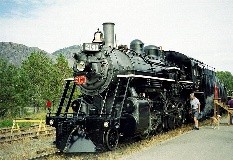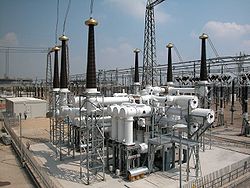Data Request for AC Interference Study: Pipeline Company
Physical Data of Overall System
- Overview of System. Please provide a map (e.g., a geological survey map) on which are indicated the following:
- the pipelines under study,
- all parallel or roughly parallel high voltage circuits which come within 1 km of the pipelines,
- all other pipelines feeding or being fed by the pipeline under study,
- all exposed structures, such as valve sites, pig launchers & receivers, M&R stations compressor stations, and other such facilities on the pipelines listed above,
- all insulating flanges on the pipelines listed above,
- all anode beds on the pipelines listed above,
- other pipelines which are parallel to the pipelines under study for significant distances (i.e., on the order of ½ km or more), or which cross them, or which come within 10 m of them,
- all electric substations and generating plants within 300 m of the pipelines under study or fed by the pipelines under study,
- electric substations of both ends of each high voltage circuit shown on the map.
Note that it is important to study the pipeline of interest as part of a system and not in isolation: AC interference does not recognize changes in pipeline ownership nor is it necessarily blocked by an insulating flange. Please include in the drawing therefore, all parts of the pipeline network which is under the influence of high voltage power line circuits and show all circuits which are in proximity with the pipeline network.
- Details of System Layout. Please provide plan view drawings of the system described in Item 1.1 above, allowing lengths and separation distances of all power lines and pipelines to be easily determined. In particular, please provide, for each power line structure (i.e., tower or pole), the following:
- separation distance of the pipeline under study from the center of the structure,
- separation distance of the pipeline under study from the edge of the structure (e.g., from the outside of the nearest tower leg).
Also, for all substations within 300 m of pipeline or generating plants fed by the pipeline, indicate the location of the pipeline on a layout drawing of the entire facility.
- Pipeline Dimensions. Please indicate the burial depth, the diameter and the wall thickness of the pipelines described in Section 1.1. Please also indicate the width of the bottom of the pipeline trench, for new construction.
Soil Resistivity Data
Soil resistivity measurements. should be made using frequency-selective equipment and the Wenner method at spacings spanning the range of 0.1 to 100 m at:
- All exposed structures (since gradient control grids may be necessary): e.g., at all valve sites, pig launchers, pig receivers, metering and regulating stations, compressor stations, etc.;
- Locations where one or more power lines deviate away significantly from the pipeline or vice-versa, at phase transposition locations, at power line crossings, and at intervals along the parallelism (so that the performance of mitigating wires can be assessed);
- Locations where the pipeline is particularly close to power line structures or grounds, including substation and power plant locations (for conductive coupling calculations).
SES can provide specifications and training to ensure that these measurements are made properly. Note that since the safety of the mitigation designs and their cost are highly dependent on the soil data, it is essential that these measurements be made by well trained personnel. Recommended Wenner spacings in meters are: 0.1, 0.2, 0.3 0.5, 0.1, 1, 2, 3, 5, 7, 10, 20, 30, 50, 70, 100, 200, and so on.
Frost Depth. If the soil freezes to 12” or more in winter, provide the maximum depth of the frost line.
Exposed Structures
Please provide drawings of valve sites, pig launchers & receivers, metering and regulating stations and other exposed locations located along the pipeline under study or at its extremities. These drawings should clearly indicate the fence line, the locations and dimensions of gates, the property boundaries (i.e., the maximum extent of any gradient control grid which may be required), the locations and diameters of structures protruding out of the ground.
Note that for sites requiring protection, safety considerations often require that gradient control conductors extend at least 1 m beyond the fence line: it is therefore best that the fence line be at least 1 m within the property line so that gradient control grid conductors do not encroach on adjacent property. Furthermore, a layer of crushed rock may be required to extend outside the grid.
Electrical Data
1. Coating Resistance. Provide an estimate or a measured value for the coating resistance of the pipeline, as installed. Note that a factory value is of no value here because damage to the coating during handling and installation reduces the coating resistance by several orders of magnitude from the factory value. Typical values lie in the range of 6,000 ohm-m² - 140,000 ohm-m² or less, with the lower values being highly dependent on the local soil resistivity.Please also provide this data, if possible, for all other pipelines identified in Item 1.1.
2. Anode Beds. For each anode bed identified in Item 1.1, indicate its physical dimensions, configuration of anodes (diameter, length, spacing, horizontal/vertical orientation) and how the anodes are interconnected (with bare or insulated leads). If the ground resistances of the beds are known, please provide them.
Resource Person
Please provide the name, telephone number and FAX number of a resource person who can respond to inquiries related to the data requested above.





